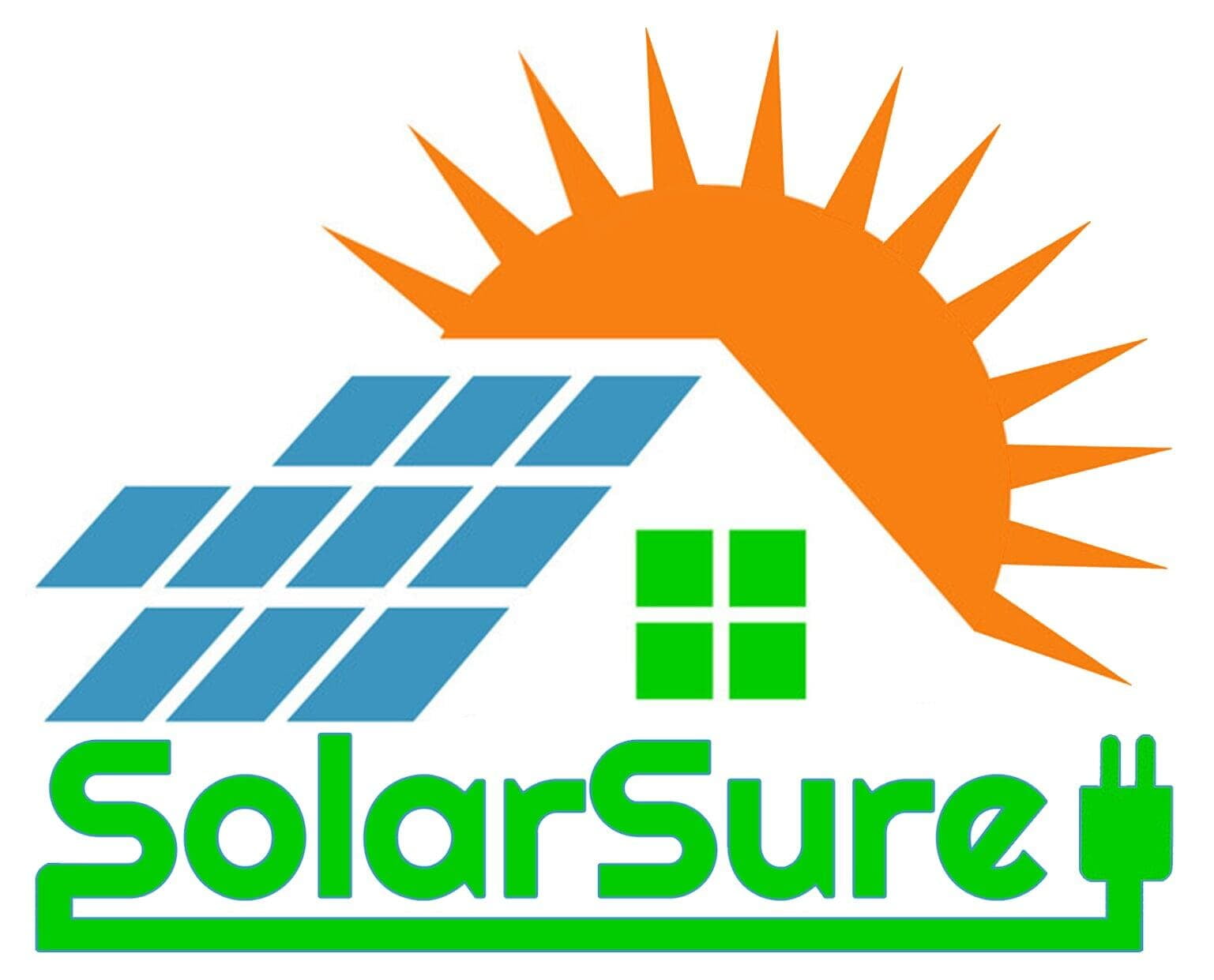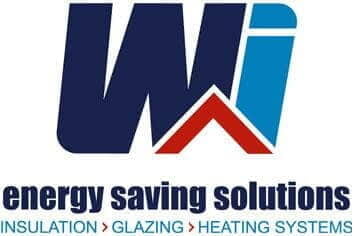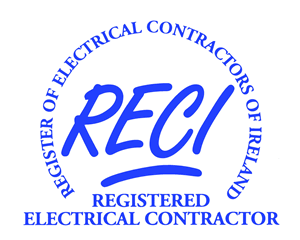FAQ
FAQ
Frequently Asked Questions about
Solar Power
General Information About Solar Power
Solar power is a renewable, reliable, and clean energy source because the sun rises every day. It reduces dependence on polluting energy sources like oil, coal, and natural gas, which emit harmful pollutants that impact our health and environment. SolarSure customers benefit from predictable, affordable rates for 25 years, unlike fluctuating rates from utility electricity providers. Home solar puts you in control of your energy future.
Solar energy is the most affordable renewable energy source. According to the International Energy Agency, solar photovoltaic (PV) technology can be the cheapest electricity source in certain conditions, thanks to a significant drop in solar prices worldwide. For example, in Ireland, the cost of installing solar panels has plummeted by 60% since 2010. Alongside this, the efficiency of solar panels and other system components continues to improve.
- Lower Electricity Bills: Solar panels can reduce your energy expenses.
- Decreased Carbon Emissions: By generating renewable energy, solar panels help lower carbon emissions.
- No Additional Running Costs: Once installed, there are no further costs to produce solar power.
- Low Maintenance and Long Lifespan: Solar panels are durable, with minimal maintenance required and a lifespan exceeding 25 years.
- Charge Your Electric Car for Free: Solar power can be used to charge your electric vehicle, cutting down on fueling costs.
- Reduced Grid Dependence: Generate your own electricity and lessen your reliance on the grid.
- Backup Power for Outages: Solar systems with battery storage can provide backup power during power cuts.
- Fewer Health-Harming Pollutants: Solar energy produces fewer air pollutants compared to fossil fuels, benefiting public health.
- A 1kw solar system produces around 850 kwh a year which will lead to savings of around 1.6 tonnes of CO2 emissions yearly
Solar System Performance
Solar System Performance
After switching to SolarSure, you won’t notice any change in how your lights, appliances, televisions, and other electrical devices operate. They will function exactly as they did before.
The primary difference you will experience with SolarSure is in your billing. You will still receive a monthly bill from your utility supplier. If you choose the 'Pay as You Save' scheme with SolarSure, you will also receive a monthly bill from SolarSure. If you purchase the system upfront, you will see your utility bill decrease and notice savings each month.
The amount of energy you need to buy from your utility supplier depends on the size of your solar system and your electricity usage.
Due to weather and seasonal changes, your bill will vary monthly. However, with SolarSure, you’ll always know exactly what you owe for the duration of our agreement.
A home solar system consists of various components that work together to transform sunlight into usable energy for your lights, appliances, and devices:
Solar panels, made of photovoltaic cells, convert sunlight into direct current (DC) electricity. As long as sunlight hits your roof, your panels generate DC electricity. Even on cloudy days, they can produce about 25% of their usual output.
An inverter is essential for converting the DC electricity from your solar panels into alternating current (AC) electricity, which powers your home. The inverter is typically installed in the attic or utility room.
The SolarSure Monitoring App tracks your system's performance and sends updates via a wireless signal. It provides real-time information about how your system is performing and alerts us automatically if it detects any issues or irregularities.
Solar panels do not require direct sunlight to produce energy; they only need daylight to generate electricity. However, the efficiency of electricity production varies based on factors like the amount of direct sunlight, and the quality, size, number, and placement of the panels.
Even during winter months, solar panels remain effective. For instance, in February 2022, solar energy contributed over 20% of Ireland's electricity at one point.
Although it's true that solar panels can be slightly less efficient in hot temperatures, the impact is minimal. Researchers state that for every degree above 25°C, solar panel performance decreases by 0.34 percentage points. However, the extended daylight hours and clear skies of summer still lead to higher electricity generation, despite this minor efficiency drop.
If you own or are planning to buy an electric car, a solar PV system can potentially charge it—either fully or partially—depending on the system’s capacity, the time of day, and the season. This can help reduce your fuel costs.
Certainly, surplus electricity can be easily diverted to your hot water tank. By using a hot water divert switch, such as an iBoost or Eddi, you can effectively use excess solar power to heat your water.
Solar panels function in any level of daylight, although they perform better with more intense sunlight.
System Functionality and Battery Storage
System Functionality and Battery Storage
The amount of sunlight the Earth receives in just one hour is enough to meet the electricity needs of every human for a year. This means solar farms have the potential to generate more electricity than is needed at any given time.
Fortunately, there are solutions to ensure that excess solar energy doesn't go to waste:
Storing energy for later use: Excess electricity can be stored for times when generation falls short of demand. Battery storage is the most popular option, but other storage methods are continually being developed.
Sharing energy with neighboring countries: High-voltage electricity interconnectors enable the trading and sharing of excess power with neighboring countries. When supply exceeds demand, we can send excess electricity to other countries and receive it when needed.
Solar panels generate electricity in DC (direct current) form, which is then converted to AC (alternating current) by an inverter. The AC electricity is transmitted from the inverter via an AC cable to your distribution board, where it powers your home's circuits, reducing reliance on grid electricity.
Solar panels alone won't provide continuous electricity, as they only generate power during the day. To be completely off-grid, you'd require a battery system and a generator in addition to your solar panels. If you have grid access, it's recommended to use it alongside your solar PV system. A battery can be installed to reduce your grid dependence, depending on your electricity use and lifestyle.
During a power outage, the inverter will turn off, stopping any electricity generated by your solar panels from entering your home. Solar panels shut down during a power outage to prevent injury to utility workers who may be repairing power lines.To maintain power, you would need a battery with an emergency circuit backup.
Batteries are increasingly popular for storing surplus power generated by your solar PV system during the day, which can be used at night or during periods of high demand instead of drawing power from the grid. They can also be charged using off-peak electricity. Multiple batteries can be connected together later to increase storage capacity.
Batteries are usually placed on the ground floor of your property, in a garage, or in an outbuilding.
Yes, it's possible to add batteries to existing PV systems.
Suitability and Installation Considerations
Suitability and Installation Considerations
To ensure optimal performance of your solar panel system, it is best to have a south-facing roof that is free from shading by trees or buildings. You will need around 25 square meters of unobstructed roof space. Contrary to popular belief, the system charges in daylight, not just direct sunshine. Remarkably, a solar system in Ireland can achieve about 70% of the energy production it would in the Mediterranean. To compensate, we can install additional panels to achieve the necessary energy levels that you need.
Solar panels can be installed on roofs facing South, East, or West. While south-facing roofs typically yield the highest performance and generate the most electricity, panels facing East or West can still perform effectively, producing about 86% of the electricity generated by south-facing panels.
Shading can indeed impact solar panel performance, as panels wired in series function based on the weakest panel in the series. To minimize these effects, optimizers can be added. These devices help improve overall performance by addressing shading issues and ensuring each panel operates efficiently.
Solar PV panels are designed to last for more than 25 years. They usually include a 10-year manufacturer's warranty and a 25-year output guarantee. The inverter is covered by a standard 5-year warranty, which can be extended to 10 years. The system also includes a 5-year workmanship warranty and a 10-year battery warranty.
Domestic solar panel installations usually take no more than two days and cause minimal disruption. For commercial systems, which require more panels, the installation process is generally quicker.
Solar panels are typically self-cleaning when installed at an angle greater than 15 degrees. However, it's recommended to inspect them visually once a year and clean them if needed. Most window-cleaning services have reach-and-wash equipment for this task, while commercial systems often require specialised cleaning companies.
Yes, they can be installed very easily into your garden or field using several different mounting solutions
No, planning permission is not required in Ireland.
No, standard solar PV installations generally do not require planning permission as they fall under permissive development. However, if your property is listed, you will need to obtain permission.
If your roof is over 10-15 years old, it is recommended to replace your roof before installation of solar panels.
Yes, if you want to increase your capacity, more solar panels could be added later.
Costs, Savings, and Financial Considerations
Costs, Savings, and Financial Considerations
Your home's location and how you use your electrical appliances will influence the savings from a PV solar power system. These systems can cut your annual electricity costs by as much as 40%.
A 6kW system with 15 panels can offer first-year savings of €1,200 and average annual savings of around €2,140 over a 25-year warranty period.
Solar energy is quickly emerging as one of the most cost-effective renewable energy options and is excellent for the environment.
By analyzing your historical electricity usage, we can design a solar system tailored to your needs. Since electricity consumption varies from person to person and season to season, we request a full year of your electricity bills to ensure we build the perfect system for you.
The payback period for solar PV panels is influenced by your electricity usage, the size of the system, and current electricity prices. Generally, homeowners can expect to recover their investment in 5 to 8 years, while commercial installations may see a return on investment in about 3 years.
Yes, that is possible but it can be an expensive process to uninstall and reinstall them.
Equipment Specifications and Quality Assurance
Equipment Specifications and Quality Assurance
We provide up to 25 years warranty on all our panels. For more information on individual products please contact a member of our team.
Our commitment to quality means we use only Tier 1 Rated Panels and high-quality inverters, which meet the highest global standards.
Panels typically range from 330Wp to 450Wp, meaning you would need between 9 and 12 panels, depending on their output.
No, solar PV is usually covered by your household insurance.
Batteries are approximately 600mm high x 400mm wide x 250 mm deep.
Solar Panels can vary in size but on average they are 1.75m x 1.05m.
Environmental Impact
Environmental Impact
Solar farms can be a valuable source of income for farmers and can still accommodate grazing; in fact, sheep can help maintain solar farms. These solar parks generate income, providing farmers with a revenue stream that supports food production and other aspects of their agricultural businesses. Additionally, solar farms allow intensively farmed land to recover while still generating income.
Agrivoltaics, an innovative approach combining solar energy generation with agricultural practices, offers many benefits. Growing crops beneath raised solar panels can shield them from harsh weather conditions like excessive heat, cold, and UV damage, often resulting in higher yields for farmers.
No, solar panels actually save thousands of tonnes of carbon emissions over their lifetime. Although manufacturing solar panels does produce some carbon emissions, claims that they emit more carbon than they save are false. Research indicates that the carbon payback period for solar panels is typically between 1 and 4 years.
This means that a solar panel, with a typical lifespan of 30 years, will generate zero-carbon, zero-pollution electricity for decades beyond the point at which the initial carbon emissions from production are paid back. Moreover, many solar projects include measures such as planting trees or hedgerows to further offset any carbon emitted during manufacturing.
With advancements in manufacturing processes, the carbon payback period is likely to decrease even more.
Yes, there are well-established industrial processes that allow for up to 99% of the materials in a solar panel to be recycled. Solar panels are usually made from silicon or another semiconductor material, encased in a metal frame with glass, all of which can be extracted, separated, and recycled or reused. The remaining 1% consists of an encapsulant material that bonds the panel layers together.
Organizations in Europe specializing in solar recycling are working with solar developers to minimize electrical waste and recycle old panels in line with the Waste from Electrical and Electronic Equipment (WEEE) regulations. This ensures that when a solar energy system reaches the end of its life, its decommissioning has minimal environmental impact and upholds high sustainability standards.
Solar panels are designed to capture light effectively to generate more power, making glint and glare issues minimal. The industry has developed sophisticated anti-reflective coatings and ultra-transparent glass to boost efficiency. Compared to many everyday building features, such as windows, solar panels actually reflect less light.
Choosing and Working with a Solar Installer
Choosing and Working with a Solar Installer
You should choose a solar installer that has experience, certifications, and positive reviews from previous customers.




